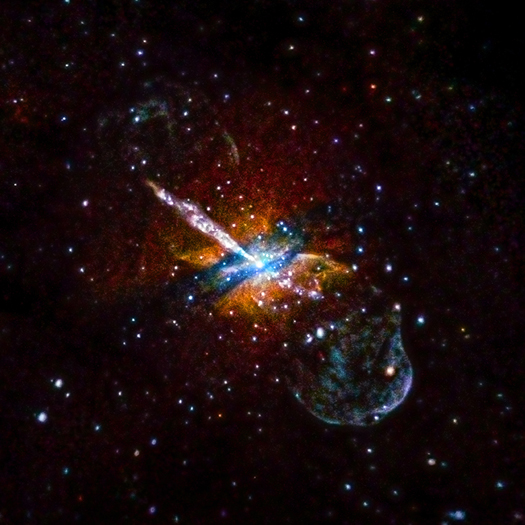It has been truly said that curiosity is the essence of human existence.
This trait of Humankind has led various endeavors, be it the discovery of fire, clothing, business, transport or the bigger goals like unearthing the history of Earth, exploration of Space or life on Earth.
All of this, had been risky and humans took the risk really well.
And then came in, passion, simply the drive to take these things beyond a mere discovery.
A recent obsession that has engulfed humanity is their love for patrolling Space.
Billionaires have found a new playfield, while Scientists have made the Earth’s orbit their secondary home, for attaining the greatest research abilities.
In a similar attempt, NASA has launched its newest X-Ray observatory in Space, called Imaging X-ray Polarization Explorer (IXPE).
This observatory, consisting of three Telescopes in one, will help throw light on exploded stars, black holes or any other violent high-energy event happening in the universe like Supernovae, Pulsars or neutron stars.
NASA’s Principal Scientist explains: “IXPE is going to open a new window on the X-ray sky”.
The space vehicle has been launched under the mission worth $214 million, from Kennedy Space Center on the SpaceX Falcon 9 rocket.
IXPE and Chandra X-ray:
The mission hopes to carry on the legacy work done by the Chandra X-ray Observatory, under NASA’s guidance, and even strive to provide additional insights into the astrophysical phenomena studied by it.
Chandra telescope has successfully imaged the miscellanies of exploded stars, covered the merger of black holes and the Space beyond.
Chandra’s in-house extensive data archive on Cen A serves as a repository for several scientific investigations undertaken in every field in Space.

And each time it turns its way towards our enormous galaxy, it tends to gather more data.
Along with new processing techniques, astronomers have been able to recreate the entire history and picture of Universe, with a new rugged look at this old galactic friend.
What difference will the IXPE make in Space observation?
Beginning in January 2022, it will observe and investigate nearly 40 celestial objects in its first year, which will be further detailed in the second year.
This two-year mission, is NASA’s first to study and measure X-ray polarization and is a joint effort with the Italian Space Agency and 12 other partner agencies across the world.
“IXPE represents another extraordinary first,” explains the associate Administrator at NASA HQ.
“Together with our partners in Italy and around the world, we’ve added a new space observatory to our fleet that will shape our understanding of the universe for years to come.”
The IXPE mission is managed by NASA Marshall, as a contributing project of the NASA’s Explorers Program.
“Each NASA spacecraft is carefully chosen to target brand new observations enabling new science, and IXPE is going to show us the violent universe around us – such as exploding stars and the black holes at the center of galaxies – in ways we’ve never been able to see it.”
In depth objectives of the mission include:
- Improvement of polarization sensitivity over X-ray polarimeter installed on Orbiting Solar Observatory OSO-8
- To measure the spectral, spatial as well as temporal parameters simultaneously.
- Understand the geometry and the emission mechanism of Active Galactic Nuclei and microquasars,
- Understanding the magnetic field configurations of magnetars
- Find the pathways of X ray production in pulsars and how particles get accelerated in Pulsar-Wind Nebulae.
This will be undertaken through collection of X-rays emanating from these celestial bodies by the mirrors provided in the telescopes, which will then focus them onto the detectors in the package for measuring polarization.
This highly-focused light aligned towards a single direction, is further studied to derive and understand the nature of environment it is sourced from, along with the information about every other environment it passed on its way.
As per NASA, this can illuminate certain long-awaited mysteries to be solved like the spinning of black holes, questions about active feeding of the black hole at the center of our Universe etc.


